10 X 90 ML LIVE JUMBO BLOODWORMS RED MOSQUITO LATVAE (900Ml) PERFECT FISH FOOD, Essential Live Food for Betta Fish, Promoting Healthy Growth and Vibrant Colors in Your Aquarium
£20.49 Original price was: £20.49.£17.42Current price is: £17.42.
Welcome these beautiful creatures to your aquarium with our 10 X 90 ML Live Jumbo Bloodworms. Perfect for Betta fish, this nutritious fish food promotes vibrant colors and healthy growth. Ideal for aquarists seeking high-quality live food for their flourishing aquatic companions.
991 in stock
Species Introduction
Essential Care Guide for Your 10 X 90 ML LIVE JUMBO BLOODWORMS RED MOSQUITO LATVAE (900Ml) PERFECT FISH FOOD
| Optimal Living Conditions | |
|---|---|
| Water Temperature | 24-27°C (75-81°F) |
| pH Level | 6.5-7.5 |
| Water Hardness | 4-12 dKH |
| Minimum Tank Size | 80L (20 gal) |
| Salinity | Freshwater |
| Care Level | Beginner Friendly |
The Live Jumbo Bloodworms, scientifically known as Chironomus spp., are aquatic larvae of non-biting midges found in freshwater environments across the globe. These vibrant red mosquito larvae are a natural food source for many species of fish, particularly for those in the tropical and freshwater categories. Originating from clean, nutrient-rich waters, they thrive in the sediments of lakes, rivers, and ponds, where they feed on organic matter and microorganisms. Their high protein content and appealing movement make them an irresistible treat for your aquatic companions, especially for betta fish, which are known for their vibrant colors and active feeding behavior. By providing these live bloodworms, you are not only enhancing the diet of your fish but also mimicking their natural feeding habits, which is crucial for their overall health and well-being.
Care Requirements Dashboard
When caring for your Live Jumbo Bloodworms, it is essential to create an optimal environment that mirrors their natural habitat. The ideal tank size for breeding and maintaining these larvae is a minimum of 10 gallons, as this allows for proper filtration and water quality management. The water parameters should be closely monitored, with a pH level ranging from 6.5 to 7.5, a temperature between 70°F to 75°F, and a hardness of 5 to 15 dGH. These conditions not only promote healthy growth but also ensure that your bloodworms remain active and nutritious. Regular water changes of 20% weekly will help maintain clarity and reduce harmful toxins, providing a stable environment for your aquatic friends. Overall, the care level for Live Jumbo Bloodworms is moderate, requiring attention to detail and a commitment to maintaining their habitat.
✓ Care Level: Moderate
✓ Ideal Tank Size: 10 gallons
✓ Water Parameters: pH 6.5-7.5, Temperature 70°F-75°F
Natural Behavior & Temperament
Live Jumbo Bloodworms exhibit fascinating natural behavior that is crucial to understand for optimal care. They are bottom dwellers, often found wriggling in the substrate, which mimics their natural habitat. Their movement is erratic, which attracts the attention of fish, making them an ideal live food option. In the wild, these larvae are social creatures, often found in large groups, which enhances their visibility and appeal to predatory fish. When introduced into a tank, they will exhibit similar social behaviors, swimming and wriggling together, which can stimulate the hunting instincts of your fish friends. This natural behavior not only encourages active feeding but also promotes a healthy, engaging environment in your aquarium. Observing these interactions can provide insight into the dietary preferences of your fish and help you tailor their feeding accordingly.
Tank Setup Guide
Setting up a tank for Live Jumbo Bloodworms requires careful consideration of their natural habitat. Begin with a spacious aquarium of at least 10 gallons, ensuring that it is equipped with a reliable filtration system to maintain water quality. The substrate should be soft and fine, mimicking the muddy bottoms where these larvae thrive. Adding plants and decorations can provide hiding spots and enhance the aesthetic appeal of the tank. Live plants such as Java moss or Anubias can also contribute to water quality by absorbing excess nutrients. Lighting should be moderate, as excessive brightness can stress the bloodworms. A gentle water current is ideal; using a sponge filter can help create a suitable environment without overwhelming them. Regular maintenance, including water changes and substrate cleaning, is essential to keep the tank conditions optimal for your bloodworms and the fish that will be feeding on them.
Water Quality Management
Maintaining optimal water quality is paramount for the health of Live Jumbo Bloodworms. Regular testing of water parameters is essential to ensure a stable environment. The pH should be kept between 6.5 and 7.5, as fluctuations can stress the larvae and affect their growth. Temperature is another critical factor; maintaining a range of 70°F to 75°F will promote healthy metabolism and activity levels. Hardness should be monitored as well, ideally between 5 to 15 dGH, to mimic their natural habitat. Ammonia and nitrite levels must remain at 0 ppm, while nitrates should be kept below 20 ppm to prevent toxic buildup. Conducting regular water changes of 20% weekly will help maintain clarity and reduce harmful substances, ensuring a healthy environment for both the bloodworms and the fish that will consume them. Utilizing a high-quality water conditioner can also aid in maintaining optimal water quality.
Feeding & Nutrition
Feeding Live Jumbo Bloodworms to your fish is an excellent way to provide a nutritious diet that enhances their health and vitality. These larvae are rich in protein, making them an ideal food source for betta fish and other carnivorous species. When introducing bloodworms to your aquarium, it is recommended to feed them in small amounts, allowing your fish to consume them quickly and preventing overfeeding. A feeding schedule of 2-3 times per week is ideal, as this frequency mimics their natural feeding habits without overwhelming your fish. Additionally, bloodworms can be used as a treat or supplement to a balanced diet, which should include high-quality pellets or flakes. It’s important to observe your fish during feeding to ensure they are consuming the bloodworms and to adjust the quantity as necessary. This attention to feeding habits will help you maintain a healthy and vibrant aquarium.
Compatibility Guide
Understanding the compatibility of Live Jumbo Bloodworms with various fish species is crucial for creating a harmonious aquarium environment. These larvae are particularly suitable for betta fish, which thrive on high-protein diets. Other compatible species include cichlids, tetras, and barbs, all of which appreciate the nutritional benefits of live food. However, it’s essential to avoid introducing bloodworms into tanks with overly aggressive fish that may disrupt the feeding process or compete for food. Additionally, smaller or timid species may struggle to compete with larger fish during feeding times. To ensure a peaceful feeding environment, consider using a feeding ring or a separate feeding tank for the bloodworms, allowing all fish to access them without stress. This careful consideration of tank mates will enhance the overall health and well-being of your aquatic community.
Health & Wellness
Ensuring the health and wellness of your Live Jumbo Bloodworms is essential for providing nutritious food to your fish friends. Common issues include poor water quality, which can lead to stress and disease. Regular monitoring of water parameters is crucial to prevent these problems. Signs of unhealthy bloodworms include lethargy, unusual coloration, or a lack of movement. If you observe these symptoms, it may indicate that the water conditions are not optimal. Additionally, maintaining a clean tank environment by performing regular water changes and substrate cleaning will help prevent the buildup of harmful bacteria. It’s also important to avoid overfeeding your fish, as this can lead to waste accumulation and deteriorating water quality. By prioritizing the health of your bloodworms, you ensure that they remain a nutritious and beneficial food source for your aquatic companions.
Breeding Information
Breeding Live Jumbo Bloodworms can be a rewarding endeavor for aquarists looking to provide a continuous supply of nutritious food for their fish. To breed bloodworms, start by setting up a separate breeding tank with similar water parameters to their main habitat. The tank should be dimly lit to encourage natural behavior and reduce stress. Introduce a healthy population of bloodworms into the breeding tank, ensuring that they have ample organic matter to feed on. Over time, the larvae will reproduce, and you will notice an increase in their population. It is essential to maintain optimal water quality during this process, as poor conditions can hinder breeding success. Once the population has increased, you can begin harvesting the bloodworms for feeding. This sustainable approach not only benefits your fish but also enhances your understanding of aquatic ecosystems.
Acclimation Process
Acclimating Live Jumbo Bloodworms to your aquarium is a critical step to ensure their survival and health. When introducing bloodworms, it is essential to avoid sudden temperature changes that could shock them. Begin by floating the sealed bag containing the bloodworms in your aquarium for about 15-20 minutes, allowing the temperature to equalize. After this, gradually mix small amounts of aquarium water into the bag every 5 minutes for an additional 20-30 minutes. This process helps the bloodworms adjust to the water chemistry of your tank. Once acclimated, gently release the bloodworms into the aquarium, avoiding direct exposure to the tank’s water to minimize stress. This careful acclimation process will help ensure that your bloodworms thrive in their new environment, providing a nutritious food source for your fish.
Long-term Care
Long-term care of Live Jumbo Bloodworms involves maintaining a stable environment that supports their growth and health. Regular monitoring of water parameters is essential, as fluctuations can lead to stress and decreased vitality. Ensure that the tank is well-filtered and that regular water changes are performed to maintain clarity and reduce harmful substances. Feeding should be consistent, with a focus on providing a balanced diet that includes high-quality pellets or flakes alongside the bloodworms. Additionally, observing the behavior of the bloodworms can provide insights into their health; active and lively bloodworms indicate a healthy environment. By prioritizing their care, you can ensure a continuous supply of nutritious food for your fish friends, enhancing their overall health and vitality.
Natural Habitat Recreation
Recreating the natural habitat of Live Jumbo Bloodworms in your aquarium can enhance their health and provide a more enriching environment. Incorporate soft, fine substrates that mimic the muddy bottoms of lakes and rivers where these larvae are typically found. Adding live plants such as Java moss or floating plants can provide cover and enhance water quality. Additionally, incorporating natural decorations like driftwood or rocks can create hiding spots, promoting natural behavior and reducing stress. The lighting should be moderate to replicate the dappled sunlight found in their natural habitats, allowing for a comfortable environment. By focusing on habitat recreation, you not only support the health of your bloodworms but also create a visually appealing aquarium that showcases the beauty of your aquatic companions.
Seasonal Care Adjustments
Seasonal changes can impact the care of Live Jumbo Bloodworms, necessitating adjustments to their environment and care routine. During warmer months, it’s essential to monitor the water temperature closely, as higher temperatures can lead to decreased oxygen levels and increased stress. Consider using a fan or air conditioning to maintain a stable temperature within the ideal range of 70°F to 75°F. In colder months, ensure that the tank is adequately heated to prevent temperature drops that could harm the bloodworms. Additionally, adjusting the lighting duration can help simulate natural seasonal changes, promoting healthy growth and activity levels. By being proactive in your care routine during seasonal transitions, you can ensure the continued health and vitality of your bloodworms and the fish that rely on them as a food source.
Expert Tips
For those looking to enhance their experience with Live Jumbo Bloodworms, consider implementing these expert tips. First, ensure that you are sourcing your bloodworms from reputable live food suppliers to guarantee quality and freshness. When feeding, consider using a feeding ring to prevent the bloodworms from scattering throughout the tank, allowing all fish to access them easily. Additionally, observe your fish’s feeding behavior and adjust the quantity of bloodworms accordingly to prevent overfeeding. Regularly clean the tank and perform water changes to maintain optimal water quality, which is crucial for the health of both the bloodworms and your fish. Finally, keep a close eye on the behavior of your bloodworms; active and lively larvae indicate a healthy environment, while lethargy may signal the need for adjustments in care. By following these expert tips, you can create a thriving environment for your aquatic companions.
Troubleshooting
Troubleshooting common issues with Live Jumbo Bloodworms is essential for maintaining their health and ensuring they provide a nutritious food source for your fish. If you notice lethargy or unusual behavior in your bloodworms, the first step is to check water quality parameters, including pH, temperature, and ammonia levels. Poor water quality is often the primary cause of stress and health issues in bloodworms. If you find that the water conditions are not optimal, perform a partial water change and ensure that the filtration system is functioning correctly. Additionally, monitor feeding practices; overfeeding can lead to waste accumulation and deteriorating water quality. If you observe signs of disease or unusual coloration, consider consulting with a professional aquarist or veterinarian specializing in aquatic species for further guidance. By being proactive and attentive to the needs of your bloodworms, you can quickly address any issues that arise and maintain a healthy aquarium environment.
Scientific Background
The scientific background of Live Jumbo Bloodworms, belonging to the Chironomidae family, highlights their ecological significance in aquatic ecosystems. These larvae are a vital food source for various fish species and play an essential role in nutrient cycling within freshwater habitats. Research indicates that bloodworms are highly nutritious, containing high levels of protein and essential fatty acids, making them an ideal dietary supplement for fish. Understanding their life cycle, which includes egg, larval, pupal, and adult stages, can provide insights into their behavior and habitat requirements. Conservation efforts are crucial to maintaining healthy populations of these larvae, as they contribute to the overall health of aquatic ecosystems. By supporting sustainable practices and responsible sourcing of live bloodworms, aquarists can contribute to the preservation of these important organisms and their habitats.
Advanced Care Techniques
For experienced aquarists looking to elevate their care routine for Live Jumbo Bloodworms, consider implementing advanced techniques. One effective method is to create a dedicated breeding setup, allowing for a continuous supply of bloodworms. This involves maintaining optimal water quality, temperature, and feeding practices tailored to the needs of the larvae. Additionally, utilizing a high-quality filtration system can help maintain clarity and reduce waste, promoting a healthy environment. Experimenting with different feeding methods, such as using feeding rings or automated feeders, can also enhance the feeding experience for both the bloodworms and the fish. Regularly documenting observations of growth and behavior can provide valuable insights into their health and well-being, allowing for adjustments in care as needed. By adopting these advanced techniques, you can ensure a thriving population of Live Jumbo Bloodworms and a nutritious food source for your aquatic companions.
Water Quality Parameters
Optimal Range
24-27°C
6.5-7.5
0 ppm
Caution Zone
22-24°C or 27-29°C
6.0-6.5 or 7.5-8.0
0.25-0.5 ppm
Danger Zone
<22°C or >29°C
<6.0 or >8.0
>0.5 ppm
Monitoring Tip: Test water parameters weekly and perform regular water changes to maintain optimal conditions for your aquatic friends!
Frequently Asked Questions
Q: How much of the Live Jumbo Bloodworms should I feed my fish?
Feeding quantities depend on the size of your fish and their specific dietary needs. As a general guideline, offer a portion that your fish can consume within 2-3 minutes. This helps prevent overfeeding, which can lead to poor water quality. For smaller fish, a small pinch of bloodworms is adequate, while larger species may require a few more. Observing your fish during feeding will help you gauge the right amount. Always ensure that uneaten food is promptly removed to maintain water clarity and quality.
✓ Expert Tip
Start with smaller amounts and adjust based on your fish’s response and health.
Q: How frequently should I feed my fish the Live Jumbo Bloodworms?
For optimal health, it is recommended to feed your fish Live Jumbo Bloodworms 2-3 times per week. This frequency allows your aquatic companions to enjoy a nutritious treat without overwhelming their digestive systems. It’s best to incorporate bloodworms as part of a varied diet, including high-quality pellets and flakes, to ensure all nutritional needs are met. Observe your fish’s behaviour and adjust frequency based on their activity level and health.
✓ Expert Tip
Incorporating a variety of foods promotes better health and colouration.
Q: Which fish species can consume Live Jumbo Bloodworms?
Live Jumbo Bloodworms are suitable for a wide range of freshwater and marine fish species. They are particularly favoured by carnivorous and omnivorous fish, including bettas, cichlids, and many species of tetras and barbs. However, it is essential to ensure that the size of the bloodworms is appropriate for your fish; smaller fish may struggle with larger worms. Always introduce any new food gradually to monitor for any adverse reactions or preferences.
✓ Expert Tip
Research your specific fish species to understand their dietary needs better.
Q: How should I properly store Live Jumbo Bloodworms?
To maintain the freshness and nutritional quality of Live Jumbo Bloodworms, store them in a cool, dark place, ideally in a refrigerator. They should be kept in their original packaging or transferred to an airtight container to prevent contamination. Avoid freezing as this can damage the worms and reduce their nutritional value. Always check for any signs of spoilage before use, such as odour or colour changes, and discard any that appear unfit for feeding.
✓ Expert Tip
Regularly check the storage conditions to ensure the worms remain healthy.
Q: Will Live Jumbo Bloodworms affect my water quality?
Feeding Live Jumbo Bloodworms can impact water quality if not managed properly. Uneaten worms can decompose in the tank, leading to increased ammonia levels and poor water conditions. To mitigate this, ensure you only feed an amount that your fish can consume within a few minutes. Additionally, perform regular water tests and maintain a consistent cleaning schedule to keep your aquarium healthy. Implementing a good filtration system can also help manage waste produced by uneaten food.
✓ Expert Tip
Consider implementing a feeding routine to monitor food intake and waste.
Q: Is Live Jumbo Bloodworms suitable for breeding fish?
Yes, Live Jumbo Bloodworms can be an excellent food source for breeding fish. The high protein content supports the growth and development of fry, making them a valuable addition to a breeding diet. However, ensure that the bloodworms are appropriately sized for the fry; smaller varieties may be more suitable for very young fish. Providing a varied diet, including live foods, can enhance the health and vitality of breeding pairs, leading to better reproductive success.
✓ Expert Tip
Introduce bloodworms gradually to avoid digestive issues in breeding pairs.
Q: How do I transition my fish to Live Jumbo Bloodworms?
When introducing Live Jumbo Bloodworms to your fish’s diet, it’s best to do so gradually. Start by mixing a small amount of bloodworms with their regular food to allow them to acclimatise to the new taste and texture. Observe their reaction and adjust the proportions based on their acceptance. Over a week, you can increase the bloodworm portion while decreasing the old food to ensure a smooth transition without causing digestive distress.
✓ Expert Tip
Patience during the transition can lead to healthier feeding habits.
Q: What ingredients are contained in Live Jumbo Bloodworms?
Live Jumbo Bloodworms are primarily composed of the larvae of mosquitoes, which are rich in protein and essential fatty acids. This composition makes them an excellent source of nutrition for fish, promoting growth and vitality. They also provide essential nutrients that contribute to vibrant colouration and overall health. It’s important to note that while they are nutritious, they should not be the sole food source; a balanced diet is critical for optimal fish health.
✓ Expert Tip
Incorporate a variety of foods to ensure a balanced diet for your fish.
Q: How does Live Jumbo Bloodworms support fish health and growth?
The protein and essential fatty acids found in Live Jumbo Bloodworms are crucial for the growth and development of fish. These nutrients aid in muscle development and overall vitality, leading to active and healthy aquatic companions. Furthermore, the natural movement of live food stimulates hunting behaviour, which can reduce stress and enhance the well-being of fish. Regularly including bloodworms in their diet can contribute to stronger immune systems and better resilience against diseases.
✓ Expert Tip
Monitor your fish’s health closely when introducing any new food.

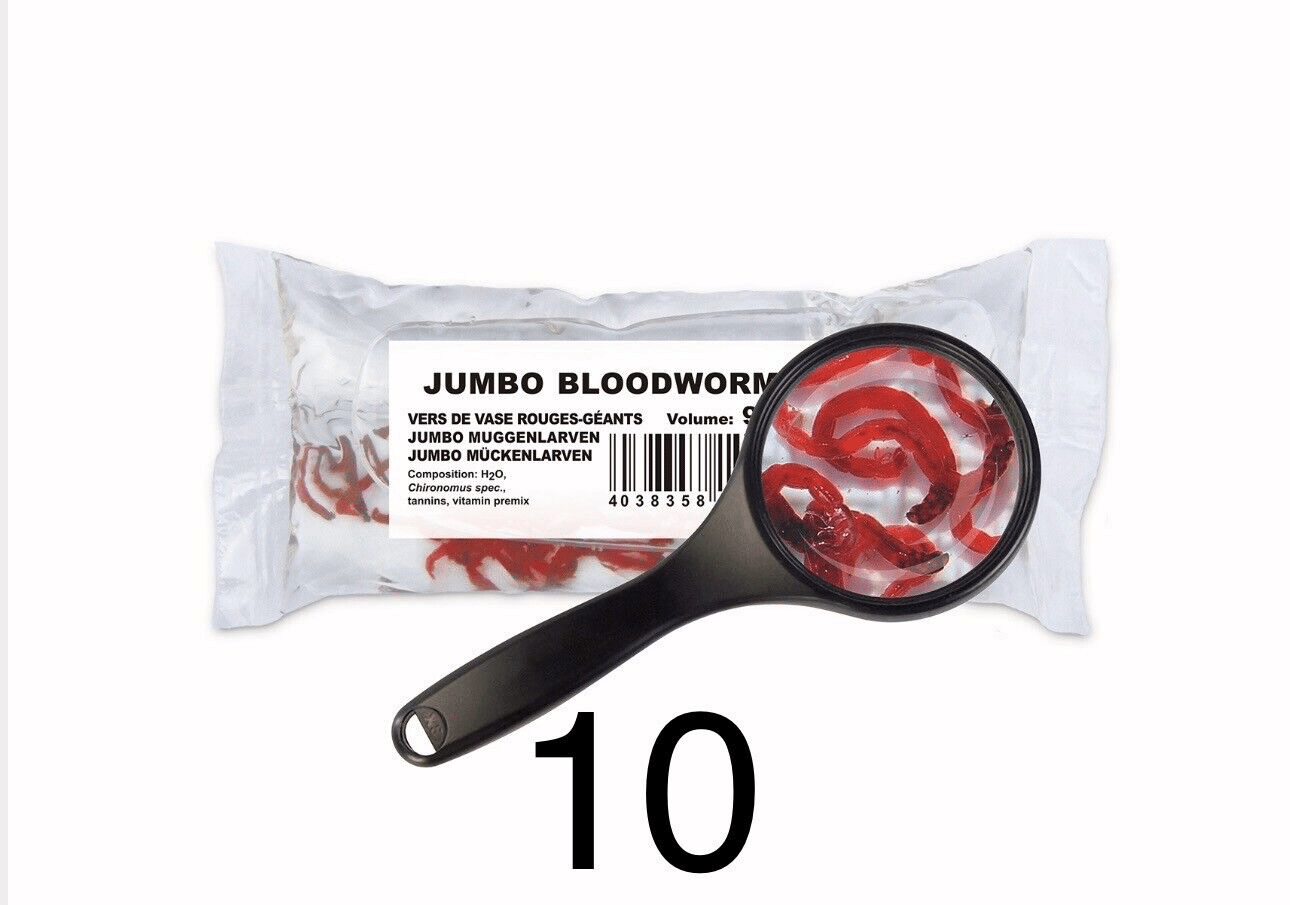
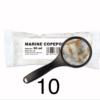
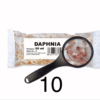


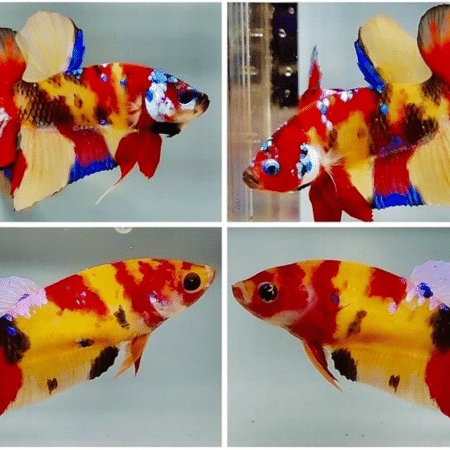
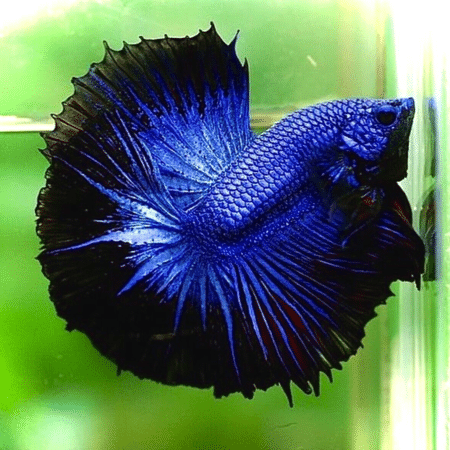
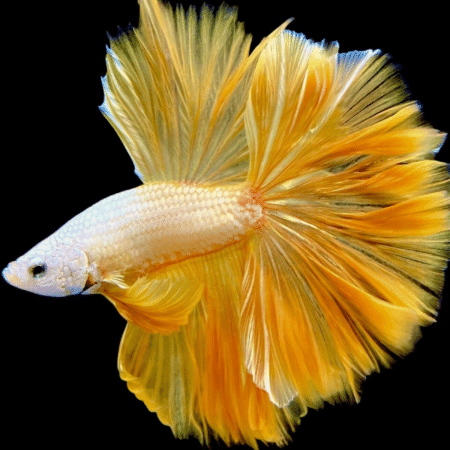
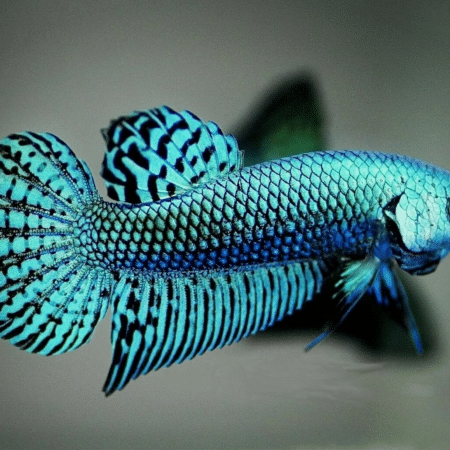


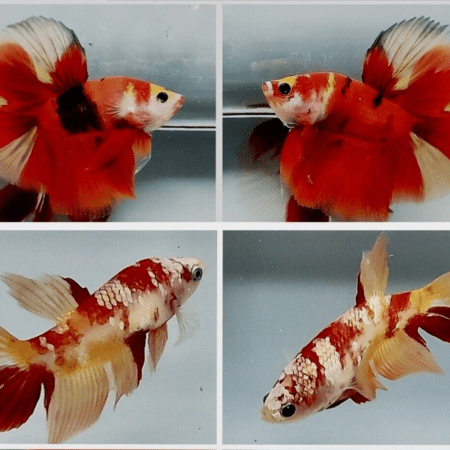
Emily Carter (verified owner) –
As a passionate fish parent, I’m always on the lookout for high-quality food that my betta fish will love. After using these 10 x 90 ML Live Jumbo Bloodworms for the past two weeks, I can confidently say they’ve quickly become a staple in my aquarium feeding routine. The moment I dropped some into the tank, my betta, who can sometimes be a picky eater, was instantly captivated! He darted around and gobbled them up with enthusiasm. It’s heartwarming to see him so excited about mealtime.
These bloodworms are vibrant and healthy-looking, which reassures me about their quality. I’ve tried freeze-dried options before, but they just don’t compare in terms of liveliness and nutritional value. Plus, the packaging was excellent—everything arrived fresh and well-preserved.
If you’re an aquarium enthusiast or just starting out, I highly recommend these jumbo bloodworms for your betta fish or any other carnivorous species. Just a small tip: be mindful of how much you feed; these worms are quite rich! Overall, my fish’s health and happiness have noticeably improved, and I’ll definitely be repurchasing. Five stars all the way!